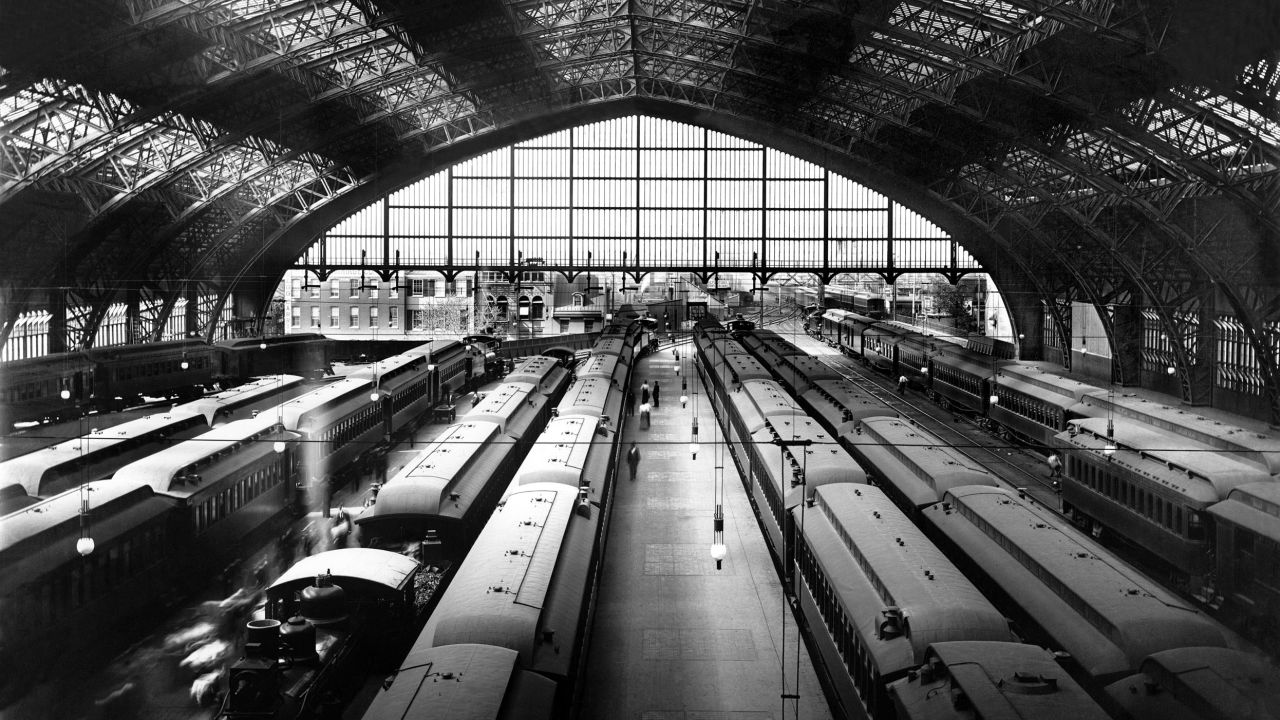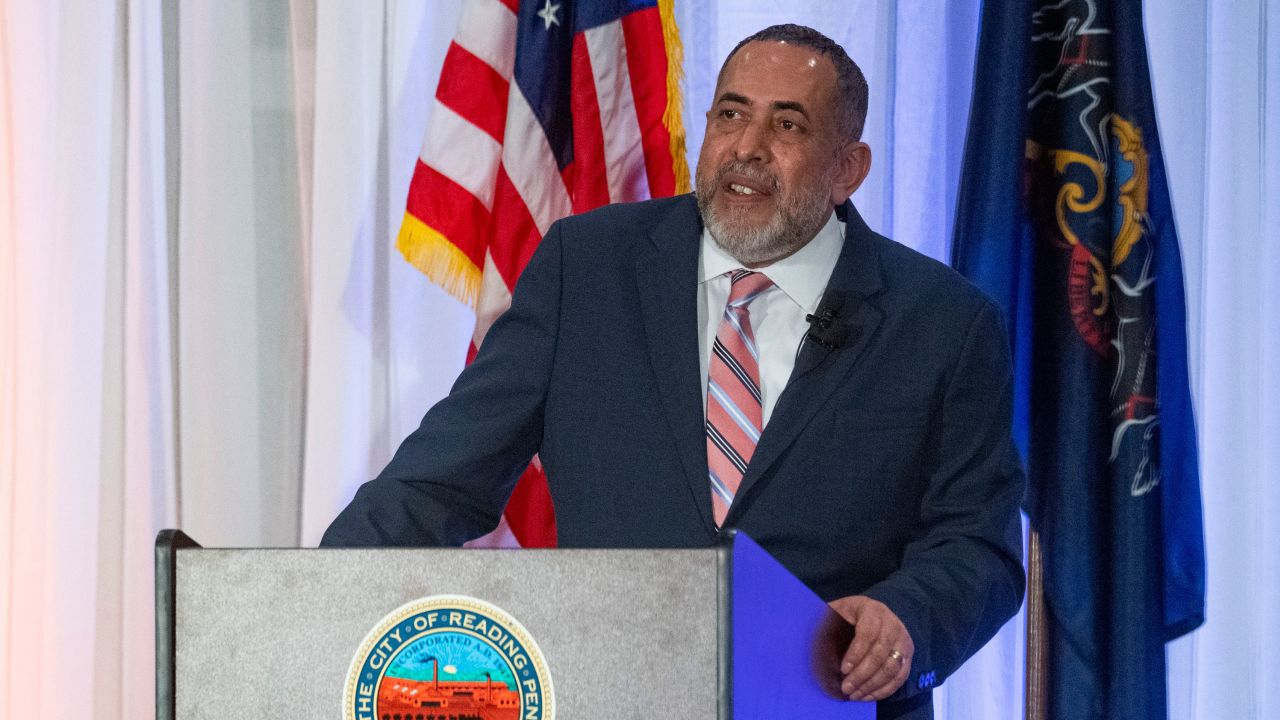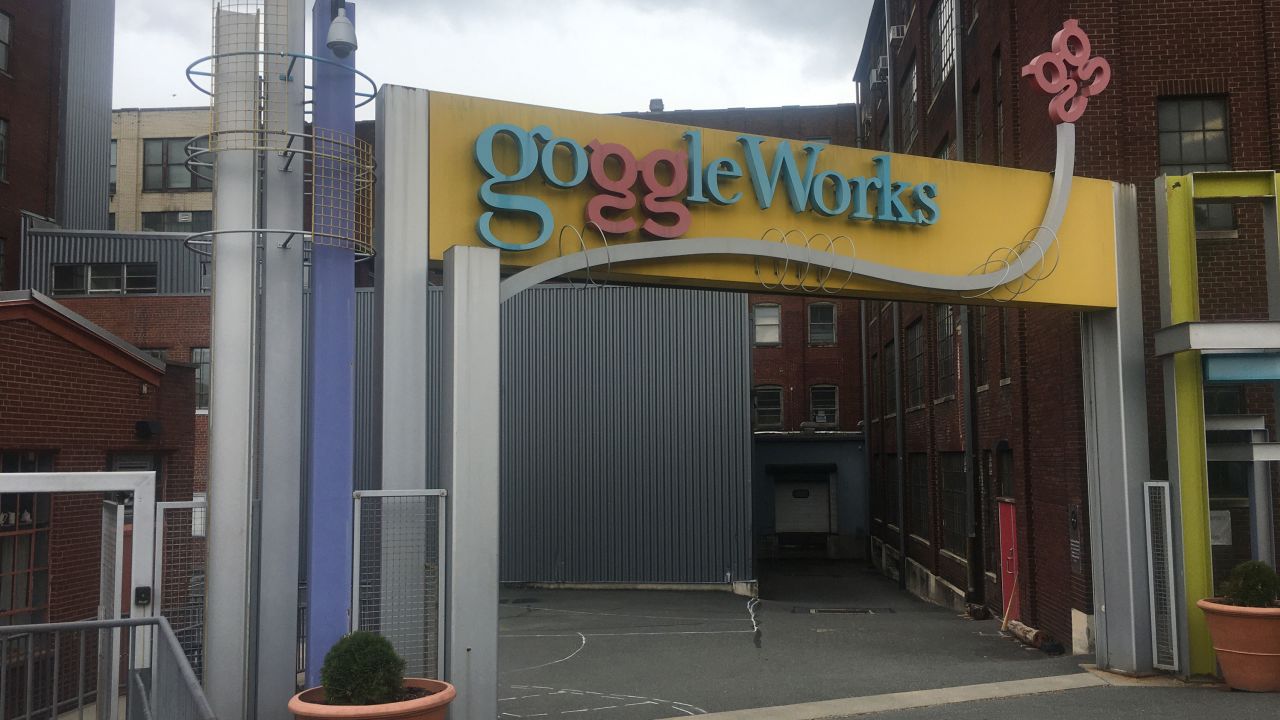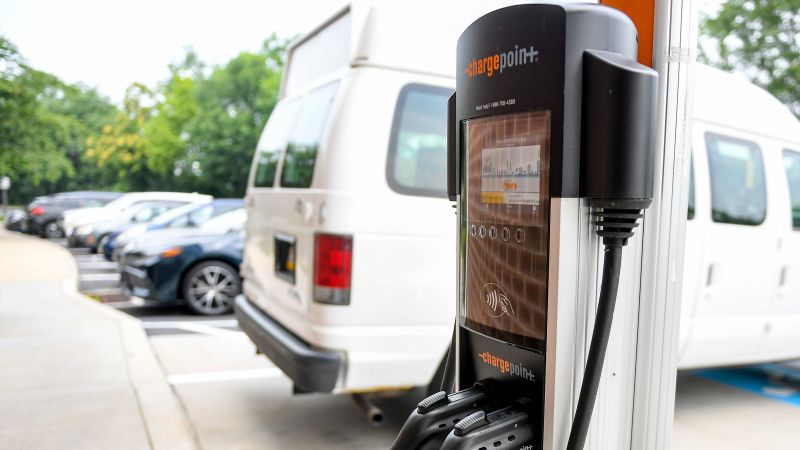Reading, Pennsylvania
CNN
—
Reading, the fourth-largest city in Pennsylvania, may be most recognized for the iconic Monopoly board game’s Reading Railroad property.
The railroad was one of the first in the US and was one of the biggest companies in the world in its heyday, connecting northeast Pennsylvania’s coal region with Philadelphia and the rest of the country.
But the Reading Railroad went bankrupt in 1971. The last passenger train left Reading a decade later, and the city found itself detached from the rest of the country.
Now Reading, a working-class city, is looking to regain its footing with a big investment in a new iteration of transportation: electric vehicle charging stations.

City officials have a multimillion-dollar plan to install dozens of EV charging stations, with high hopes of revitalizing the city by making it easier for more workers and visitors to go to Reading and perhaps attract a new, younger generation of residents as well.
To help make it happen, city officials are seeking federal money provided by the massive infrastructure law passed by Congress in 2021. The law not only provides funding for roads and bridges but also allocates billions of dollars to build a nationwide network of plug-in electric vehicle chargers – a key climate priority for the Biden administration.
The measure garnered bipartisan support, despite facing some backlash from a handful of Republicans. After many previous administrations had failed to get a comprehensive infrastructure package through Congress, the Biden administration celebrated the law as a huge legislative win.
In late May, Reading submitted an application for a new grant known as the Charging and Fueling Infrastructure program. The program will provide $2.5 billion over the next five years to local governments – and Reading officials hope to get a piece of that pie.
The city recently exited a state oversight program for “financially distressed” cities after nearly 13 years, and seeking federal and state funding for a variety of projects is key to helping it rebuild.
“We don’t give up,” said Mayor Eddie Moran, noting that it was a no-brainer for the city to apply for the federal grant.
“We know these opportunities exist that can give us a better future,” he said.

An electric vehicle revolution could be on the horizon, but there are reasons to be skeptical.
EVs made up just 5.8% of new car sales last year, according to Kelley Blue Book.
In addition to being expensive, it’s not always easy for drivers to find a charging station when they need one. There are currently only about 63,000 EV chargers publicly available in the US. Tesla has an extensive nationwide network, including a handful at a hotel in Reading, but those chargers are currently only compatible with Tesla vehicles.
And let’s face it: EV plug-in chargers are of no use to people who don’t own electric vehicles. But Moran argues Reading’s proposed EV charger plan is an “encouragement” for people to buy EVs.
There is federal money available for drivers too. The Inflation Reduction Act – a sweeping, federal climate and health care law passed last year – revamped a federal EV tax credit worth up to $7,500 for consumers who purchase certain vehicles.
The Biden administration has also proposed ambitious new car pollution rules that could require electric vehicles to account for up to two-thirds of new cars sold in the US by 2032.
“Electric vehicles still have a long way to go; there’s still a lot of bugs that need to be worked out,” said Donna Reed, president of the Reading City Council.
“But if you’re going to be an economic development leader or political leader, you always have that eye to the future,” she said.
And while the number of EVs on the road is small, it’s been growing.
In 2022, the number of registered electric and hybrid vehicles jumped more than 75% compared with the prior year in Berks County, where Reading is the county seat, according to data from the Pennsylvania Department of Transportation.
Other than the Reading Railroad, there’s another fun fact about the city. A seven-story pagoda atop Mount Penn overlooks the city. Originally meant to be a luxury hotel when it was built in 1908, the unique landmark now serves as a symbol of Reading – and is one of the seven locations where city officials have proposed installing EV chargers.
Overall, Reading has asked for nearly $2.6 million from the federal grant program to help install more than 30 public electric vehicle chargers and expects to find out later this year whether it will receive the grant money.
The city will be on the hook for covering at least 20% of the project, but it can use other grants and in-kind contributions, such as land value and city workers’ salaries, to make up that amount.

The plan calls for two mobile charging trailers that would be tested at the pagoda. The site draws visitors to the area, and there’s access to hiking and biking trails nearby. The road up the mountain is also home to two annual hill-climb races in which cars race up Duryea Drive, named for an automobile maker who used the road to test his cars in the early 1900s.
But building the needed infrastructure up the mountain could prove challenging. The mobile chargers will help the city evaluate whether there is demand for permanent EV chargers at that location.
Permanent EV chargers are planned for two city parks and Albright College’s campus.
The GoggleWorks Center for the Arts, the former site for a safety goggles manufacturer, is another proposed location for EV chargers. It features dozens of resident artists, holds workshops and has a number of studios for trades such as ceramics, woodworking and photography.

City officials expect chargers at city hall and the public works department to be the first ones up and running, operable in late 2024. Installation at these locations may move the quickest because existing electricity sources can be utilized.
Currently, Reading spends about $800,000 annually on fuel for city-owned vehicles – a cost that could be reduced with the pivot to electric vehicles, according to Jamar Kelly, the city’s director of finance and deputy managing director.
Additionally, the EV chargers could help the city reach its sustainability goals.
The grant would be “instrumental in us starting and leading the City of Reading and the County of Berks to a safer, healthier, ecofriendly community,” the application reads.
Whenever a massive federal spending law is enacted, there’s concern over whether the money will go out fairly – reaching small towns, rural areas and urban metropolises alike.
While there may be plenty of money to go around, smaller cities may lack the staffing needed to prepare and submit applications. The infrastructure law offers nearly 400 different funding programs.
For Reading, a boot camp offered by the Local Infrastructure Hub – which helps cities access the funds provided by the federal infrastructure law – was invaluable. It provided tips on how to apply, the ins and outs of how EV chargers work, and how other cities have had success or challenges installing chargers previously.
“Seeing how people in other places have already addressed these issues allows us to be able to write a better grant,” said Lisa Unrath, Reading’s former grant coordinator.
She learned how to structure the grant so that if Reading receives the money, it can complement projects funded by other grants. The city can apply for more money from the same federal grant again over the next five years, creating an opportunity for the city to plan for the future now.
The Local Infrastructure Hub is sponsored by a variety of groups, including Bloomberg Philanthropies and the Kresge Foundation, as well as the National League of Cities and the US Conference of Mayors, among others.
“Working with already more than 950 municipalities across the US, we’re placing a concentrated focus on America’s traditionally underserved areas who each have ambitious dreams, but need the expertise, resources, and network the Hub offers to put forward competitive applications,” said James Anderson, who leads the government innovation programs at Bloomberg Philanthropies.
“It’s about getting as many of the so-called left-behind places a once-in-a-generation foothold in the new economy – and we’re well on our way,” he added.
This headline has been updated.

